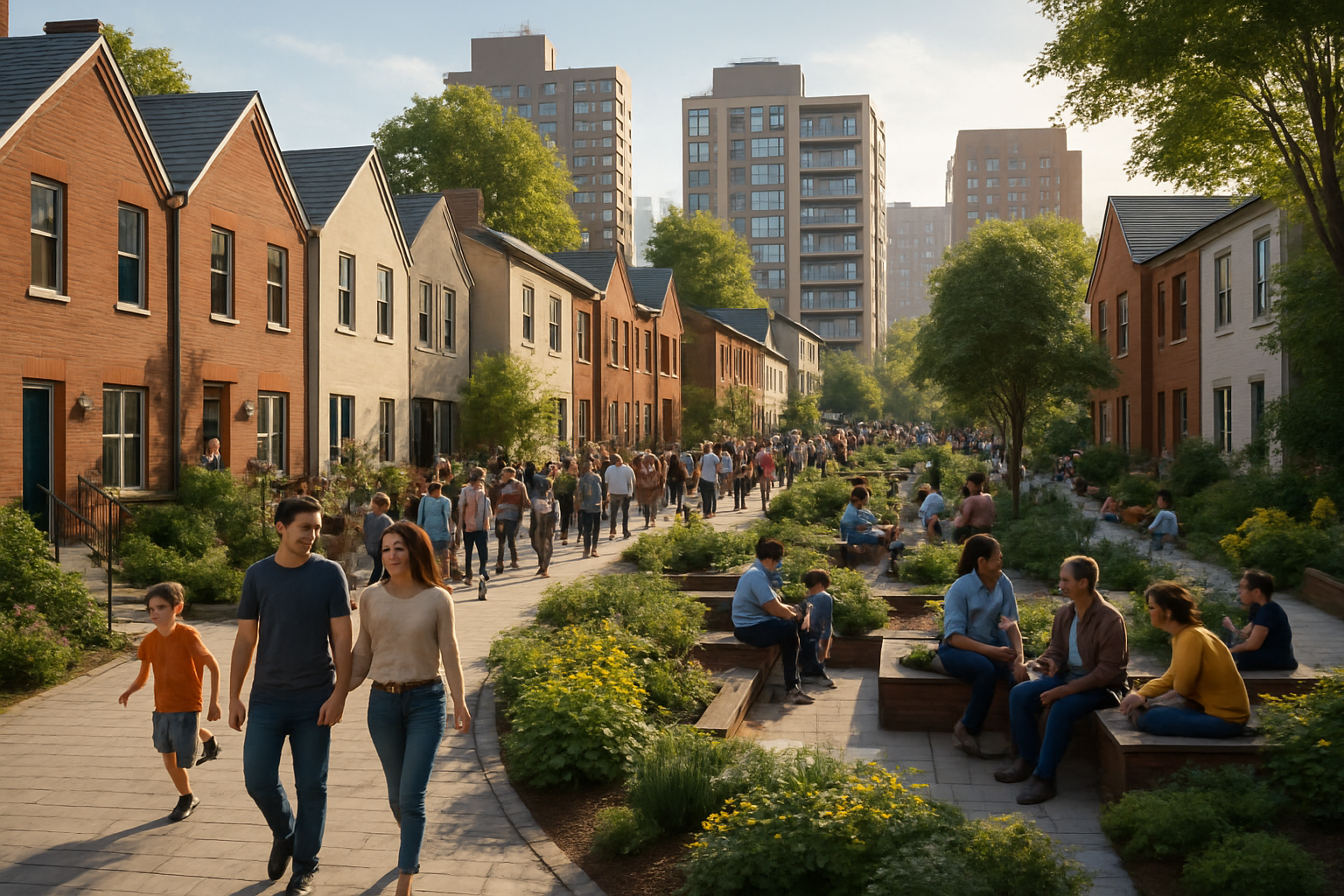Soulful Urbanism: Reimagining City Spaces for Human Connection
Urban solitude amidst bustling crowds. Concrete jungles devoid of warmth. These paradoxes of modern city life have long plagued urban dwellers. But a new movement is emerging, one that seeks to infuse metropolises with soul and foster genuine human connections. Soulful urbanism is revolutionizing how we perceive and design our cities, prioritizing community, empathy, and shared experiences. Read below to explore this transformative approach to urban living.

The concept gained traction in the early 2010s, as urbanists, architects, and social scientists began to question the soul-crushing effects of modernist urban planning. They observed how sterile cityscapes, car-centric designs, and the privatization of public spaces were eroding social fabric and human well-being. Inspired by the work of urbanists like Jane Jacobs and Jan Gehl, proponents of soulful urbanism sought to create cities that nourish the human spirit and foster meaningful connections.
Key Principles of Soulful Urban Design
Soulful urbanism is characterized by several core principles that guide its implementation. First and foremost is the emphasis on human-scale design. This approach prioritizes walkable neighborhoods, mixed-use developments, and public spaces that encourage spontaneous interactions. By creating environments that are inviting to pedestrians and conducive to lingering, soulful urbanism aims to slow down the frenetic pace of city life and create opportunities for genuine engagement.
Another crucial aspect is the integration of nature and biophilic design. Recognizing the profound impact of green spaces on mental health and social cohesion, soulful urbanists advocate for the incorporation of parks, community gardens, and natural elements throughout the urban fabric. These spaces serve not only as refuges from the concrete jungle but also as catalysts for community building and shared experiences.
Cultivating Community Through Shared Spaces
At the heart of soulful urbanism is the creation of shared spaces that foster a sense of belonging and collective identity. This goes beyond traditional public squares to include innovative concepts like pocket parks, community living rooms, and flexible streets that can transform into temporary gathering spaces. These areas are designed to be inclusive, accessible, and adaptable to the changing needs of diverse communities.
One notable example is the rise of urban commons – spaces collectively managed by local residents. From community-run gardens to cooperatively managed plazas, these initiatives empower citizens to take ownership of their urban environment. By involving residents in the design, maintenance, and programming of shared spaces, soulful urbanism creates a deeper sense of connection to place and community.
Technology as a Tool for Human Connection
While often viewed as a source of disconnection, technology plays a crucial role in soulful urbanism when harnessed thoughtfully. Smart city initiatives are being reimagined to prioritize human needs and social interactions. For instance, digital platforms are being used to facilitate neighborhood events, skill-sharing networks, and collaborative urban improvement projects.
Augmented reality (AR) is another tool being explored to enhance the soulfulness of urban spaces. AR applications can overlay historical information, community stories, or interactive art onto physical locations, creating layers of meaning and fostering a deeper connection to the urban environment. These technological interventions aim to complement, rather than replace, face-to-face interactions, serving as bridges between the digital and physical realms of urban life.
Challenges and Future Directions
Despite its promising potential, soulful urbanism faces several challenges in its implementation. One significant hurdle is the tension between development pressures and the preservation of community character. As cities grapple with housing shortages and economic growth, there is a risk that soulful urban principles may be sacrificed in favor of rapid, profit-driven development.
Additionally, ensuring equity and inclusivity in soulful urban initiatives remains a critical concern. There is a danger that these efforts could inadvertently contribute to gentrification and displacement if not carefully managed. Soulful urbanists are thus exploring ways to integrate affordable housing, support local businesses, and preserve cultural heritage within their designs.
Looking ahead, the future of soulful urbanism lies in its ability to adapt to emerging social and environmental challenges. Climate resilience, for instance, is becoming increasingly intertwined with the movement’s goals. Future soulful urban projects will likely focus on creating not just socially connected communities, but also ones that are environmentally sustainable and resilient in the face of climate change.
As cities continue to grow and evolve, the principles of soulful urbanism offer a hopeful vision for urban futures. By prioritizing human connection, community empowerment, and emotional well-being, this approach has the potential to transform our cities into more livable, lovable, and soulful places. The challenge now lies in scaling these ideas and integrating them into mainstream urban planning and development practices, ensuring that the soul of our cities not only survives but thrives in the years to come.





